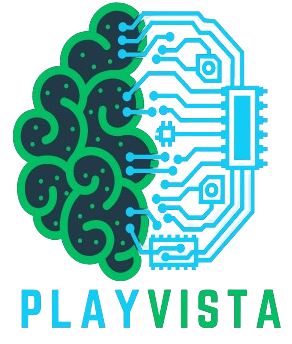Web development is the backbone of the modern digital landscape, driving how information is accessed, shared, and interacted with on the internet. It encompasses the creation and maintenance of websites and web applications, blending technical expertise with https://vetementsbreton.com/ creative design. This article explores the fundamentals of web development, its evolution, current trends, and future directions.
The Fundamentals of Web Development
Web development involves several core components and disciplines, each playing a crucial role in creating functional and appealing websites and applications:
- Frontend Development: This aspect focuses on the client-side of web development—the part of the website that users interact with directly. Frontend developers use technologies like HTML (Hypertext Markup Language), CSS (Cascading Style Sheets), and JavaScript to build the visual and interactive elements of a website. They ensure that the site is not only aesthetically pleasing but also responsive and accessible across different devices and browsers.
- Backend Development: Backend development deals with the server-side of web applications—the part that users don’t see but which powers the functionality of the website. It involves creating and managing databases, server logic, and application programming interfaces (APIs). Backend developers typically use programming languages like Python, Ruby, PHP, Java, and frameworks like Node.js and Django to build and maintain the server-side infrastructure.
- Full-Stack Development: Full-stack developers have expertise in both frontend and backend development. They are equipped to handle all aspects of a web application, from designing the user interface to managing server-side functionality. This holistic approach allows them to build complete, end-to-end solutions.
- Web Design: While closely related to frontend development, web design focuses on the visual and user experience aspects of a website. Designers work on layout, color schemes, typography, and overall aesthetics to create a visually appealing and user-friendly interface.
The Evolution of Web Development
Web development has evolved significantly since the early days of the internet, driven by advancements in technology and changing user needs:
- Early Web Development: The early web was characterized by static HTML pages. Websites were simple and consisted of basic text and images with minimal interactivity. The focus was primarily on content delivery, with limited emphasis on design and user experience.
- The Rise of Dynamic Websites: The introduction of technologies like CGI (Common Gateway Interface) and server-side scripting languages such as PHP and ASP enabled the creation of dynamic websites. These sites could interact with databases and provide personalized content, marking a shift from static to interactive web experiences.
- The Web 2.0 Era: The term “Web 2.0” describes the transition to more interactive and user-centric web experiences. This era saw the rise of AJAX (Asynchronous JavaScript and XML), which allowed for smoother, more responsive web applications. Social media platforms, blogs, and user-generated content became prominent, emphasizing user engagement and collaboration.
- The Modern Web: Today’s web development landscape is characterized by the use of advanced frameworks and libraries like React, Angular, and Vue.js for frontend development. Backend development has also advanced with the use of microservices architecture and cloud computing. The focus is on creating fast, scalable, and highly interactive web applications that deliver seamless user experiences.
Current Trends in Web Development
Web development is continually evolving, influenced by new technologies and changing user expectations:
- Progressive Web Apps (PWAs): PWAs combine the best features of web and mobile applications, offering offline capabilities, push notifications, and fast performance. They provide a native app-like experience while being accessible through a web browser.
- Responsive Design: With the increasing use of mobile devices, responsive web design has become essential. It ensures that websites and applications adapt to various screen sizes and orientations, providing an optimal user experience across devices.
- Artificial Intelligence and Machine Learning: AI and machine learning are being integrated into web applications to enhance user interactions and personalize experiences. Chatbots, recommendation systems, and automated content generation are examples of AI-driven features.
- WebAssembly: WebAssembly (Wasm) is a binary instruction format that allows high-performance applications to run on the web. It enables developers to compile code written in languages like C, C++, and Rust into a format that can be executed by modern browsers, enhancing web performance and capabilities.
- Serverless Architecture: Serverless computing allows developers to build and run applications without managing server infrastructure. By leveraging cloud services, developers can focus on writing code while the cloud provider handles scaling and server management.
The Future of Web Development
As technology continues to advance, several key trends are likely to shape the future of web development:
- Increased Focus on Security: As cyber threats become more sophisticated, web development will place greater emphasis on security. Practices such as regular security audits, encryption, and secure coding will be crucial to protect user data and ensure safe online experiences.
- Enhanced User Experience (UX): The future of web development will prioritize creating intuitive and engaging user experiences. Advances in UX design, including more interactive and immersive interfaces, will drive the development of websites and applications that are both functional and enjoyable to use.
- Integration of Emerging Technologies: Web development will continue to integrate emerging technologies such as augmented reality (AR), virtual reality (VR), and the Internet of Things (IoT). These technologies will offer new possibilities for interactive and connected web experiences.
- Sustainability: As environmental concerns grow, web development will increasingly focus on sustainability. This includes optimizing web performance to reduce energy consumption and adopting eco-friendly practices in hosting and development.
Conclusion
Web development is a dynamic and evolving field that plays a critical role in shaping the digital experience. From its early beginnings to the modern web, it has continuously adapted to technological advancements and changing user needs. As we look to the future, web development will remain at the forefront of innovation, driving the creation of interactive, secure, and sustainable digital experiences. With ongoing advancements and emerging trends, the future of web development promises to be both exciting and transformative.
